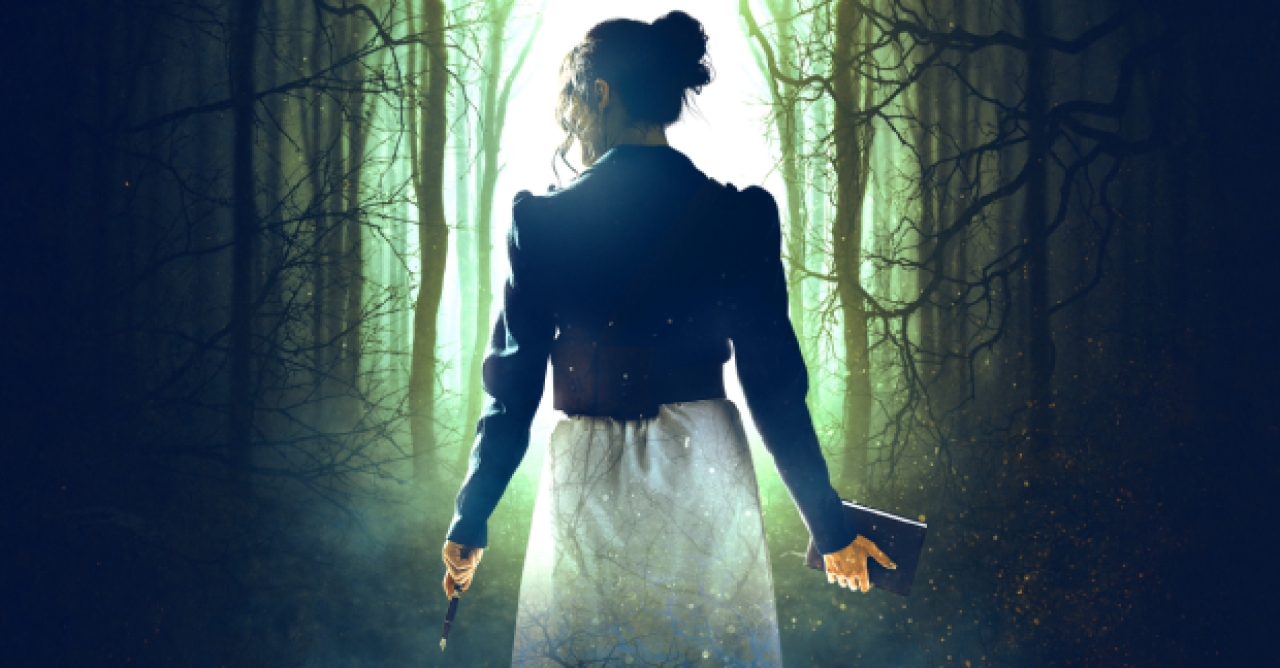By Rhian Lock
Ôÿà Ôÿà
As a big fan of Gothic horror and theatre respectively, Rona Munro’s theatrical reworking of Frankenstein was a show that I had been desperate to catch. Rather than leaving Mary Shelley – the author of Frankenstein – behind the pen, Munro transports her into the play itself, lending her the driving narrative. Eilidh Loan is zany as Shelley, manically whizzing around the stage, yanking a pen from her straggly bun, and pirouetting in manuscripts tossed in the air. Her analysis of her own ÔÇÿhero’, Victor, is something to be admired ÔÇô anybody who has read Frankenstein can deduct that Victor is in fact a hero at all. She mocks him and snarls at the idea of a ÔÇÿgreat man’, criticizing Victor for his own self-pity. It is clear that Munro wanted to present the modern viewer with the Shelley that die-hard Romanticism fans know and adore ÔÇô a quirky, eighteen-year-old feminist who outsmarted her male peer group in an attempt to write the best spooky story; however, Loan often falls into a shouty, rambling monologue that seems to de-rail from the story at hand.
Munro is faithful to Shelley’s original script, without any diversions or imagined scenes. Despite this, some moments are glossed over ÔÇô such as the scene in which the blind DeLacey allows the Monster into his home. In the novel, this is the scene in which the reader is confronted with the Monster’s one true raw and desperate need ÔÇô to make a human connection. However, in this adaption, the entire scene is less than a minute long. It is rushed, and therefore it is difficult to establish that empathy towards the Monster which is so easy to find within the novel. The scene in which Victor’s mother dies is also a little puzzling ÔÇô a seemingly healthy and happy character is suddenly sentenced straight to her death, with no mention of symptoms or diagnosis. Loan’s weird boast, ÔÇÿ’Now that’s a proper death bed scene!” left myself and other audience members, frankly, a little baffled.
Ben Castle-Gibb shines in his performance as Victor Frankenstein, and his speeches were really the only parts of the play I found myself captured by. He is the only character that evoked any sort of interest ÔÇô which left me to question whether Munro’s adaption was a bit lost on me. Was this not a feminist reworking that portrays Shelley as the valiant author, attempting to reign in and discipline her uncooperative protagonist? If so, why was Victor the only character that displayed a wide emotional range?
The set left a lot to be desired, which, coupled with an over-zealous fog machine and the actors scrambling up shaky, plastic trees to reach the raised platforms, was a little distracting. However, for a story concerning the vengeance of the undead, the most horrifying thing of all was the horrible costuming of the Monster. In the novel, Shelley’s rich descriptions of the Monster’s stature is enough to make the reader’s blood run cold; yet Munro’s monster, played by Michael Moreland, stands just slightly taller than Victor, has a few painted-on zig-zags on his face and his bare chest, and stands shuddering in baggy, ripped jogging bottoms. It was a little bemusing.
Munro’s Frankenstein falls flat. Would I see it again? Unlikely. Would a family looking for a night of innocent, light-hearted spookiness in the Halloween season enjoy it? Probably.



